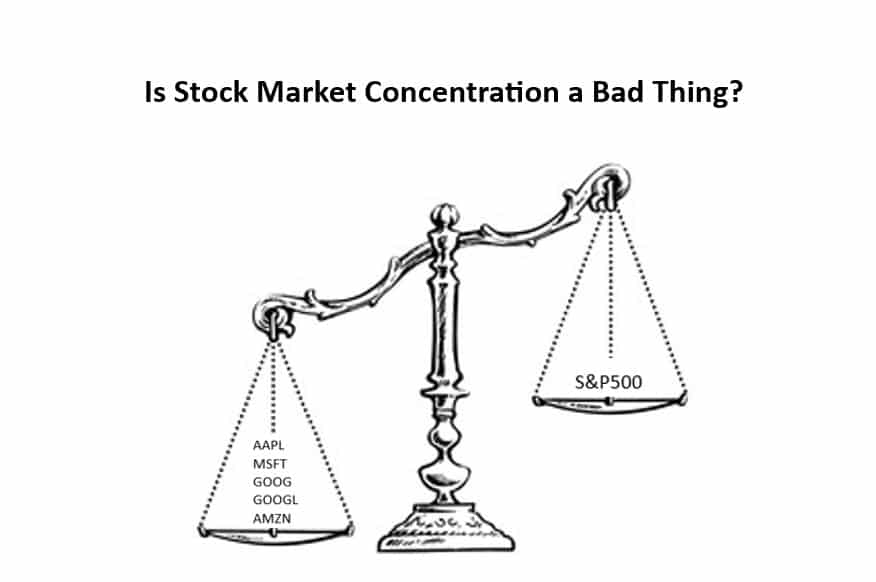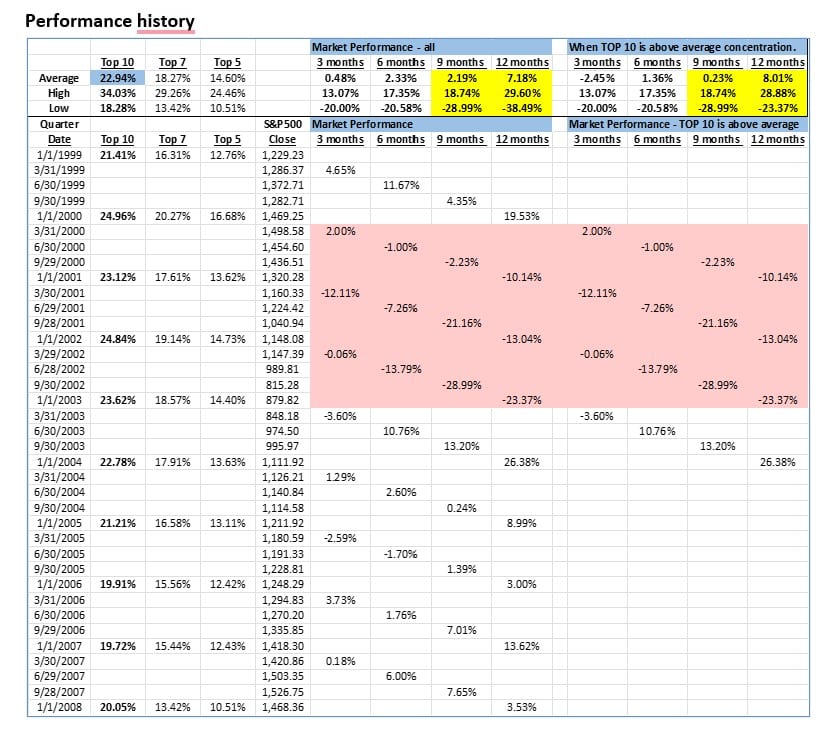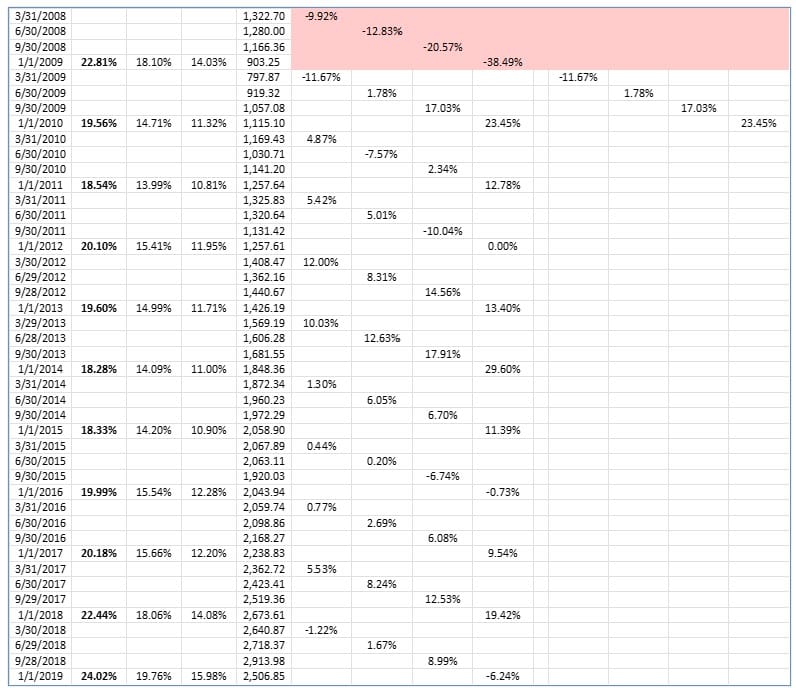
There seem to be a lot of people wringing their hands about how concentrated today’s stock market is. More specifically, the worry is over how a few stocks make up a large amount of the benchmark S&P500. It is true that the current market is the most concentrated it has been in the past 25 years. As of January 1 of this year, the top 10 stocks in the S&P500 make up 34% of the index. The top 5 stocks, AAPL, MSFT, GOOG, GOOGL, and AMZN, comprise 24% of the S&P500 (see Table 1 below).
Is this unhealthy? Is this risky? Does it portend a potential decline in stock prices?
….Spoiler – the answer is “no”.

There is a simple way to answer this question. TPA looked at the concentration of stocks in the S&P500 at the start of each year from 1999 to the present. We then calculated the average high, and low concentrations for the S&P500. The average from 1999 to 2024 is 22.94%. The high and low are 34% and 18%, respectively.
We then measured the performance of the S&P500 for 3, 6, 9, and 12 months following the concentration measurement. The average performance for 6 months and 12 months for all years is +2.33% and +7.18%.
Now, we calculated the performance for only those years in which the concentration of the Top 10 stocks in the S&P500 was above the 25-year average or 22.94%. There were 10 years in which the top 10 stocks in the S&P500 comprised more than 22.94% of the index. Those years were 2000, 2001, 2002, 2003, 2009, 2019, 2020, 2021, 2022, and 2023. The average 6-month and 12-month performance for the highly concentrated years was +1.36% and +8.01%. The 12-month average performance was actually better for concentrated years. (See table 2 below)
Although concentrated years did include the years associated with the TECH bubble bursting (2000-2002), it did not include the worst year of the Housing Crisis (2008).
We have also included all the historical performance data in the tables below.
TPA’s conclusion is that the historical evidence does not indicate that market concentration is a bad thing or indicate lower prices are lurking ahead.





Jeff Marcus founded Turning Point Analytics (TPA) in 2009 after 25 years on trading desks and 13 years as a head trader to provide strategic and technical research to institutional clients. Turning Point Analytics (TPA) provides a unique strategy that works as an overlay to clients’ good fundamental analysis. After 10 years of serving only large institutions, TPA now offers its research services to mid and small managers, RIA’s, and wealthy sophisticated individuals looking for a way to increase their returns and outperform their peers.
Subscribe 2 Week Trial
Customer Relationship Summary (Form CRS)





